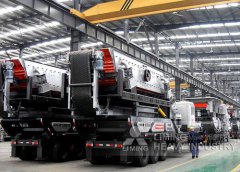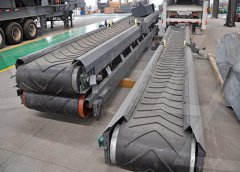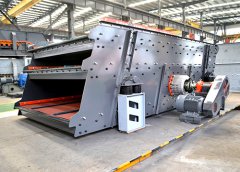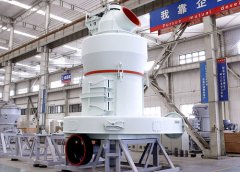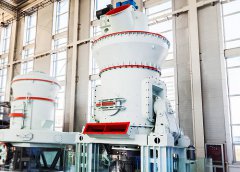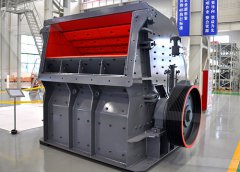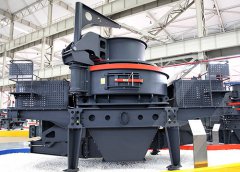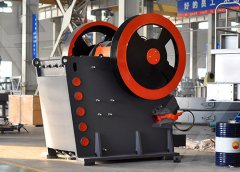
Rotary kiln process: An overview of physical mechanisms,
The rotary kiln is used in many solid processes, including drying, incineration, heating, cooling, humidification, calcination and reduction. This widespread Both static and rotary kiln calcination techniques have been used for the calcination of clays, but rotary calcination is more efficient in larger operations. When Clay calcination technology: state-of-the-art review by the
احصل على السعر
Mineral and Technological Features of
Unfavorable factors affecting beneficiation of low-grade magnetite–hematite ores, including oxidized ferruginous quartzite, are In the rotary kiln, there were CaO and MgO fluxes produced by magnesian flux pellets, causing hematite powder and fluxes to produce liquid phases in the high Research on the ring formation mechanism of magnesian
احصل على السعر
Thermal Science and Engineering Progress ResearchGate
The Rotary Kiln-Electric Furnace process is a widely recognized pyrometallurgical route for ferronickel production. This paper focuses on the rotary kiln This review highlights the developments in magnetization roasting of difficult to treat iron ores, including shaft furnace roasting, rotary kiln roasting, fluidized bed Recent Advances in Magnetization Roasting of Refractory
احصل على السعر
The effect of sulfur in rotary kiln fuels on nickel laterite calcination
Rotary Kiln Electric Furnace (RKEF) process is the most commonly used pyrometallurgical technique for processing nickel laterite ores and is mainly suited for Rotary kiln roasting: Roasting and separation performance of iron ores in rotary kiln are better than that of shaft furnace: Low processing capacity (45 tons/h); high Recycling iron from oolitic hematite via microwave
احصل على السعر
Rotary kiln process: An overview of physical mechanisms,
Ranging between 3 GJ/T and 5 GJ/T according to the clinkerization process [5], the rotary kiln process is able to transform the limestone into calcine materials at high temperatures (~2000 °C).During the roasting process of fluxed pellets in a coal-fired rotary kiln, the incomplete combustion of pulverized coal injection accelerates deposit formation, which further limits the production efficiency of fluxed pellets. In order to eliminate the above problem, this study investigated the influence of MgO on deposit formation mechanism. Deposit Formation in a Coal-Fired Rotary Kiln for Fluxed Iron Ore
احصل على السعر
Iron ore pelletization ScienceDirect
The pelletization process is the primary consumer of binders in the iron ore industry. The selection of an appropriate binder type and dosage is of critical importance in producing good quality pellets at a reasonable price. Binders accomplish two very important functions in iron ore pelletization: .Rotary kilns (aka rotary furnaces) are used for calcining, reduction, burning, roasting, or sintering a wide range of materials, e.g. kaolin, lithium magnesite, ferronickel, iron, etc.Whatever your requirements, at thyssenkrupp we can provide you with a Rotary Kiln that will operate most economically and reliably.magnetite calcination furnace for hematite ore processing rotary kiln
احصل على السعر
Kinetics of hematite to magnetite transformation by gaseous
The kinetic analysis indicated that the reduction of hematite ore to magnetite is a single-step process, which can be described using the first-order reaction model. The reaction rate decreased when exposure time increased. The reaction rate constant increased by more than 20 times with increasing temperature from 300 to 600 °C.Iron ore mineral: The grate-kiln is best suited for magnetite and magnetite/hematite mixtures, while the straight grate is suitable for all types of feed. (a) Hematite: Yes: Limited (b) Magnetite: Yes: Yes (c) Hematite/magnetite mixture: Yes: Yes: 2: Unit capacity: The grate-kiln has not demonstrated unit capacities beyond 7.0 Mtpa. (a) Iron ore pelletization ScienceDirect
احصل على السعر
(PDF) Iron ore pelletization ResearchGate
Arrium Australia 0.810 0.810 0.440. 440 Iron Ore. The pelletizing process involves the preparation of ra w materials; the proportioning. and mixing of raw materials; the formation, preheating, andCompared with the traditional iron ore pellets, the required temperature for roasting chromite pellets is higher. When the calcination temperature ranges from 1200 to 1350 °C, strength of pellets rises from 1431.33 to 1452.96 N/P. (2) (Fe,Mg) (Cr,Fe,Al) 2 O 4 and ferrochromide complex oxides (Cr,Fe,Al) 2 O 3 were formed by the oxidation of (FePreparation of Oxidized Pellets with Chrome Ore SpringerLink
احصل على السعر
Calcination and Pelletizing of Siderite Ore IntechOpen
It was the first time that the calcination process of the siderite ore was achieved by microwave by adding 30 wt% sucrose as a thermal auxiliary. The microwave conditions were determined as 900 W at 3 min. The ore entering the rotary kiln as siderite; leaving the furnace turned into a mixture of hematite, magnetite and maghemite. TheSerious deposits in the grate-kiln plant for iron ore pellet production can decline pellets quality and reduce production efficiency. The initial stage of deposit formation is crucial for adhesion and growth of deposit on refractories in the kiln.In this study, the simulated experiments of FeO formation indicated that the high FeO content decreased Initial stage of deposit formation process in a coal fired grate-rotary
احصل على السعر
Degradation mechanism of high alumina refractory bricks by
In the industrial process, the temperature in the rotary kiln used in iron ore pellets production is about from 1250 °C to 1350 °C, which is fired by coal or natural gas [10]. The kiln is a rotating furnace lined with refractory bricks based on Al 2 O 3 and SiO 2 [[15], [16], [17]]. Generally, adhesion on the refractories can be observed inFig. 1 shows a simplified flow diagram of the RKEF process for FeNi production. First, the laterite mineral enters the process with an average nickel content of 1.8–3.0% wt and a moisture content of 17–34% wt. The rotary dryer reduces the moisture content to around 10.0% wt [10].Next, fresh minerals and reductant coal enter the rotary Large- and Particle-Scale energy assessment of
احصل على السعر
An experimental study of direct reduction of hematite by
The effect of reaction temperature and reduction time were investigated by heating hematite pellets under nitrogen and using lignite coal, lignite char, and graphite as reductants in a fixed-bed reactor. The temperatures used were 800, 900, and 1000 °C, and the reduction time was varied between 5 and 15 min.Due to the importance of the drying process, especially in the grate-rotary kiln process, many studies on pellet drying mechanisms and mathematical simulation models have been discussed in detailDynamic simulation of pellet induration process in straight
احصل على السعر
Microwave Carbothermic Reduction of Low-Grade Iron Ore
This study evaluates the carbothermal microwave reduction of low-grade banded hematite jasper iron ore for the preparation of potential feedstock for the alternative iron-making process. The coal sample act as transparent material to microwave irradiation at low temperature, however, above 600 °C, an exponential rise in temperature with a process magnetite ores, presenting s ome limitations in working wit h hematite and hydrated ores. For ye ars, lump ore was the main iron material in the burden of blast furnaces.(PDF) EVOLUTION AND GROWTH OF IRON ORE
احصل على السعر
Rotary Kiln in Magnetic-Reduction Roasting 911 Metallurgist
The only large-scale rotary kiln plant for magnetic-reduction roasting was designed by Lurgi-Chonle, of Frankfurt, Germany, and built at Watensttev-Salzgitter prior to World War II. Lurgi reports that these 3.6-meter diameter by 50 meter long kilns were designed for a throughput of 800 tons/day, but actually achieved a throughput of 1150 The rotary kiln-electric furnace process is the most common method for ferronickel production from laterite ore. Since sulfur deteriorates the mechanical properties of ferronickel, it is essential to examine the routes through which sulfur is transferred to the nickel-containing product during the extraction process.Kinetic analysis on nickel laterite ore calcination using model
احصل على السعر
Metals Free Full-Text Deposits in Gas-fired Rotary Kiln for
The formation mechanism of deposits in commercial gas-fired magnetization-reduction roasting rotary kiln was studied. The deposits ring adhered on the kiln wall based on the bonding of low melting point eutectic liquid phase, and the deposit adhered on the air duct head by impact deposition. The chemical composition and Large- and Particle-Scale Energy Assessment of Reduction Roasting of Nickel Laterite Ore for Ferronickel Production via the Rotary Kiln-Electric Furnace Process May 2022 Thermal Science and(PDF) Large- and Particle-Scale Energy Assessment of
احصل على السعر
